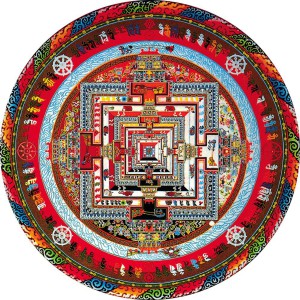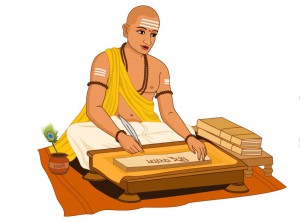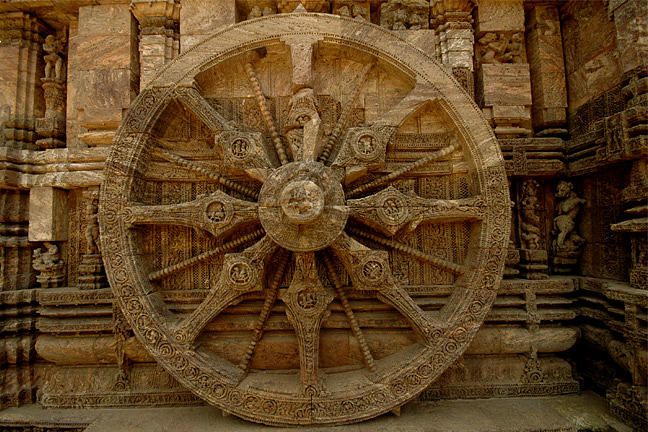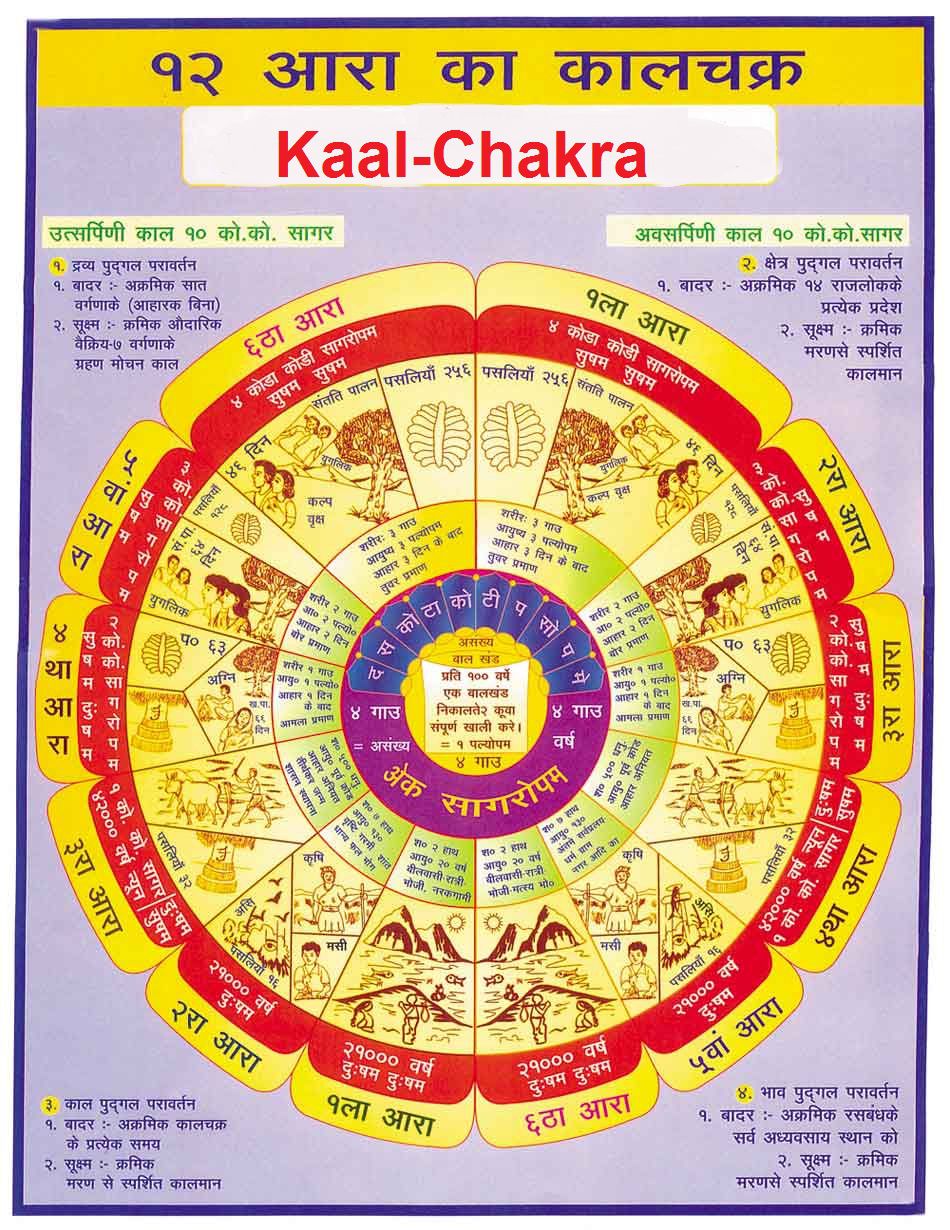No products in the cart.
“Ever since the dawn of civilization, people have not been content to see events as unconnected and inexplicable. They have craved an understanding of the underlying order in the world. Today we still yearn to know why we are here and where we came from. Humanity’s deepest desire for knowledge is justification enough for our continuing quest. And our goal is nothing less than a complete description of the universe we live in.” ― Stephen Hawking, A Brief History of Time
A Yuga is an age (or aeon) in the wheel of time. Each age has its own intrinsic characteristics.There are four yugas : Sathya Yuga, Trétha Yuga, Dvaapara Yuga and Kali Yuga.The present age is the Kali Yuga – the age of decadence. In the Sathya Yuga, the age of Truth, righteousness was at its peak. As time passes by, there’s a gradual decline in virtue which reaches its nadir in the Kali Yuga. At the end of the Kali Yuga, the Divine Will intervenes and restores the universe to its original state of virtue. This marks the beginning of the next Maha Yuga and the cycle thus continues.
It is said as when time destroys, it brings along the new phase that is probably the creation or destruction. The  never ending cycle of death and life; re-birth and birth; form and Dissolute is called the Kaal-chakra or the ‘Wheel of Time’. Our ancestor always understood that time was precious so just like Greeks have a god of time, Chronos, we hindus found “Kaal Bhairav” or “Kali” as the god and goddess of time.
never ending cycle of death and life; re-birth and birth; form and Dissolute is called the Kaal-chakra or the ‘Wheel of Time’. Our ancestor always understood that time was precious so just like Greeks have a god of time, Chronos, we hindus found “Kaal Bhairav” or “Kali” as the god and goddess of time.
Time was calculated with the position of moons and stars in our ancient hindu astrology , it was considered apt as it was a never ending process. Timing is respected all over hence it is said, one who understand the importance of time , he would excel in his life.
Time and Spirituality
Just like the normal world, timing is important in the world of spirituality as well. It is believed that if a spiritual practice takes place in a perfect time, then it gives the most beneficial outcome to the person involved in the spiritual activity. Therefore, the person who is performing the religious practice should deeply understand the relationship between time and karma. Therefore in the today’s world people first take advice from the Satguru before performing the religious rituals. Because there are some time periods that are very good and effective while there are others that can harm us to a wide extent. Hence a Satguru guides people and also perform rituals in a proper way for them.
Panchangam : The Spiritual Calender
 Our rituals tell us that every day has five attributes. These attributes are called panchangam. Panch means “five” and Angam means “attributes”. These five attributes of every day include ‘vaaram or day of the week’,’tithi’,’nakshatram’,’yogam’ and ‘karanam’ . It is believed that if we recite the panchangam of the day by waking up in the morning then it helps to learn the spiritual specialties of that day.
Our rituals tell us that every day has five attributes. These attributes are called panchangam. Panch means “five” and Angam means “attributes”. These five attributes of every day include ‘vaaram or day of the week’,’tithi’,’nakshatram’,’yogam’ and ‘karanam’ . It is believed that if we recite the panchangam of the day by waking up in the morning then it helps to learn the spiritual specialties of that day.
Each day of the week is ruled by one of the first seven of the nine lords, i.e., Sunday by Soorya lord, Monday by Chandra lord, Tuesday by Angaaraka lord, Wednesday by Budha lord, Thursday by Guru lord, Friday by Sukra lord and Saturday by Sani lord. The last two of the nine lords, Raahu and Kethu, are associated with Tuesday and Saturday respectively. Every day of the week has the power of the god who rules it hence it affects the mankind in that way only. We can say that Wednesday i.e. the day of Budh is related to buddhi (intellect) therefore the work related to writing , speaking an studies are initiated particularly on this day. It is because Lord Buddha is incharge of ‘vaak chaathuryam’ the gift of spectacular and articulate speech. In the same manner Chandra i.e Monday rules the mind and the Guru i.e Thursday rules all the spiritual activites followed.
Muhurtha – Spiritually Powerful Time of the Day
Muhurtha are the particular times of the day during which the spiritual powers are at its peak. Basically there are three main periods in the day that are considered to be spiritually powerful. First is the Brahma Muhurtha that is the culminating period at dawn that is a three hour special time. If we assume the 6am sunrise , then that will be between 3am and 6am everyday. Hence this time is considered auspicious for doing spiritual practices. Second is the Abhijit Muhurtha that is high at noon when the sun is at its zenith. If we assume that sunrise is at 6 a.m and sunset is at 6pm then Abhijit muhurth would be at 12 noon everyay. Third is the Nitya Praosham that is one and a half hours before the dusk and apparently half an hour thereafter. If we assume the sunset at 6pm then Nithya Pradosham would be between 4:30 p.m and 6:30 p.m everyday. The three times that we have discussed are also known as Sandhi kaalam , that is the junction times within each day . It firstly starts when the night meets the day , the second comes when morning meets afternoon and the third is when the day meets night . According to the siddhas the spirituals that are practiced during this time are particularly very effective . Hence spiritual aspirants make use of these time period to enhance their spiritual advancement.
Inauspicious Times in Each Day
Rahu Kaalam, Yama Gandam, etc.:Within any given day, there are also certain time periods that are inauspicious. Two of these are Raahu Kaalam and Yama Gandam. The Siddhas say that it is ideal if we can use these times totally for worship. If these time periods are used for worship and not for material activities, they yield manifold spiritual benefits. To start with, we will describe how to calculate the Raahu Kaalam time period for any given day. The Yama Gandam calculation is similar. Divide the time period between sunrise and sunset into eight equal parts, which we will refer to as time octants. Arrange the days of the week in the order M,Sa,F,W,Th,Tu,Su and assign the second through the eighth time octants to these days in this order. These time octants then are the Raahu Kaalam times on each of the days of the week. So how do you calculate the Raahu Kaalam time period for your location on any given day? First find out the sunrise and sunset times for your location (this information is generally available in your local newspaper). Find out the length of the time octant by dividing the period from sunrise to sunset by eight. Pick the time octant that’s appropriate for the day in question by following the order mentioned above. This is the Raahu Kaalam time period for the day in question for your location.
Horai (Hora) – Hourly Worship
Just like a day has its own specialities, each hour of the day also has its own specialities. Originally each 24 hour day was split into 60 naazhigais, each 24 minutes long. Thus two and a half nazhigais constitute one modern hour which was known as horai (hora) in ancient times. The Siddhas say that each horai of each day is ruled by one of the first seven of the nine lords. Just like each day reflects the characteristics of the lord who rules the day, each horai also reflects the characteristics of the lord who rules the horai. Thus we have Soorya horai, Chandra horai, Angaaraka horai, Budha horai, Guru horai, Sukra horai and Sani horai times during each day.
All a spiritual aspirant has to do is to meditate on the governing horai lord 108 times during each horai. For example, during Soorya horai times meditate thus: Om Sooryaaya Namaha or Salutations to Soorya. Likewise Om Chandraaya Namaha, Om Angaarakaaya Namaha, Om Budhaaya Namaha, Om Guruve Namaha, Om Sukraaya Namaha, Om Saneesvaraaya Namaha during their respective horai periods.
Tithi – Day of Moon Phase
A lunation is the interval between new moons, roughly 29.5 days. Each lunation is divided into 30 thithis or lunar days with each tithi defined as the time required for the longitude of the moon to increase by 12 degrees over the longitude of the sun.Thus there are 14 tithis between every new moon and full moon and vice versa. The zeroth and the fifteenth tithis are of course the new moon and the full moon respectively.
Nakshatram – Star of the Day
Rasi – Sign of the Star
The moon revolves around the earth in roughly 27 days. During this period, the moon traces a path around the sky. The ancients split this path of the moon into 27 units and gave each unit the name of a star, star group or constellation. These 27 units are known as nakshatrams. People also refer to the nakshatra as a star. This is not quite precise since a nakshatra can be much more than a star. The nakshatras are also referred to as brides of Chandra. This same path has also been divided into 12 units, each called a Rasi or Raasi or Rashi. 27 divided by 12 = 2.25. Thus each rasi covers two and a quarter nakshatras.







